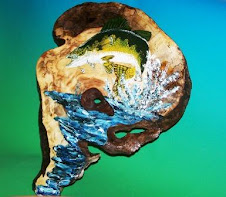These days we often here talk of climate change and the potential impact that global warming will have on our society. But what about the affect of climate change on wildlife and wildlife habitat.
Many of our wildlife species are completely dependant on a very narrow band of acceptable climactic and environmental conditions in order to survive. Serious study of the effects of climate change on habitat must be undertaken and planning models must be tuned to reflect the new reality.
In short, when an ecosystem undergoes a dramatic change it can no longer sustain resident and migratory wildlife populations. New species of plant and animal life take over and indigenous species disappear.
So why don’t animals and birds simply move as their habitat changes? The fact is that they do, and much can be learned by the studying the slow migration of species into regions where they were previously unknown. But what happens if they can’t move? Take the animals and birds of the northern tundra for example. They rely on food sources that are only produced in regions of permafrost. As the permafrost vanishes due to sustained periods of higher than normal temperatures new types of vegetation will take over. These species simply cannot move further north to find food sources because it will simply cease to exist.
Species like the ptarmigan, arctic fox, and polar bear will simply cease to exist. And guess what? It is very likely to happen in our lifetime. Many scientists firmly believe that this is a “when”, rather than an “if” scenario.
There are other fragile ecosystems like the prairie pothole region that runs from the north central US through Southern Manitoba, Saskatchewan, and into Southern Alberta. This ecosystem provides a stopover for almost every migratory bird along the Mississippi flyway accounting for 80% of the waterfowl in North America. This ecosystem is already at risk due to improper farming and development practices. Over the next 50 years the potholes that provide a safe secure stopover for a wide variety of waterfowl will simply cease to exist.
Don’t take my word for it! Do your own research and form your own opinions, but you will find that, in spite of government rhetoric to the contrary, many of these changes are inevitable. Wildlife studies must now focus on how to plan for the new reality and forget about sustainable management models of the past.
Many of our wildlife species are completely dependant on a very narrow band of acceptable climactic and environmental conditions in order to survive. Serious study of the effects of climate change on habitat must be undertaken and planning models must be tuned to reflect the new reality.
In short, when an ecosystem undergoes a dramatic change it can no longer sustain resident and migratory wildlife populations. New species of plant and animal life take over and indigenous species disappear.
So why don’t animals and birds simply move as their habitat changes? The fact is that they do, and much can be learned by the studying the slow migration of species into regions where they were previously unknown. But what happens if they can’t move? Take the animals and birds of the northern tundra for example. They rely on food sources that are only produced in regions of permafrost. As the permafrost vanishes due to sustained periods of higher than normal temperatures new types of vegetation will take over. These species simply cannot move further north to find food sources because it will simply cease to exist.
Species like the ptarmigan, arctic fox, and polar bear will simply cease to exist. And guess what? It is very likely to happen in our lifetime. Many scientists firmly believe that this is a “when”, rather than an “if” scenario.
There are other fragile ecosystems like the prairie pothole region that runs from the north central US through Southern Manitoba, Saskatchewan, and into Southern Alberta. This ecosystem provides a stopover for almost every migratory bird along the Mississippi flyway accounting for 80% of the waterfowl in North America. This ecosystem is already at risk due to improper farming and development practices. Over the next 50 years the potholes that provide a safe secure stopover for a wide variety of waterfowl will simply cease to exist.
Don’t take my word for it! Do your own research and form your own opinions, but you will find that, in spite of government rhetoric to the contrary, many of these changes are inevitable. Wildlife studies must now focus on how to plan for the new reality and forget about sustainable management models of the past.
click here for Reprint Permissions
When it’s time to buy for the outdoors person that has everything check out www.DistinctNorthernArt.com.
When it’s time to buy for the outdoors person that has everything check out www.DistinctNorthernArt.com.
.jpg)



.jpg)